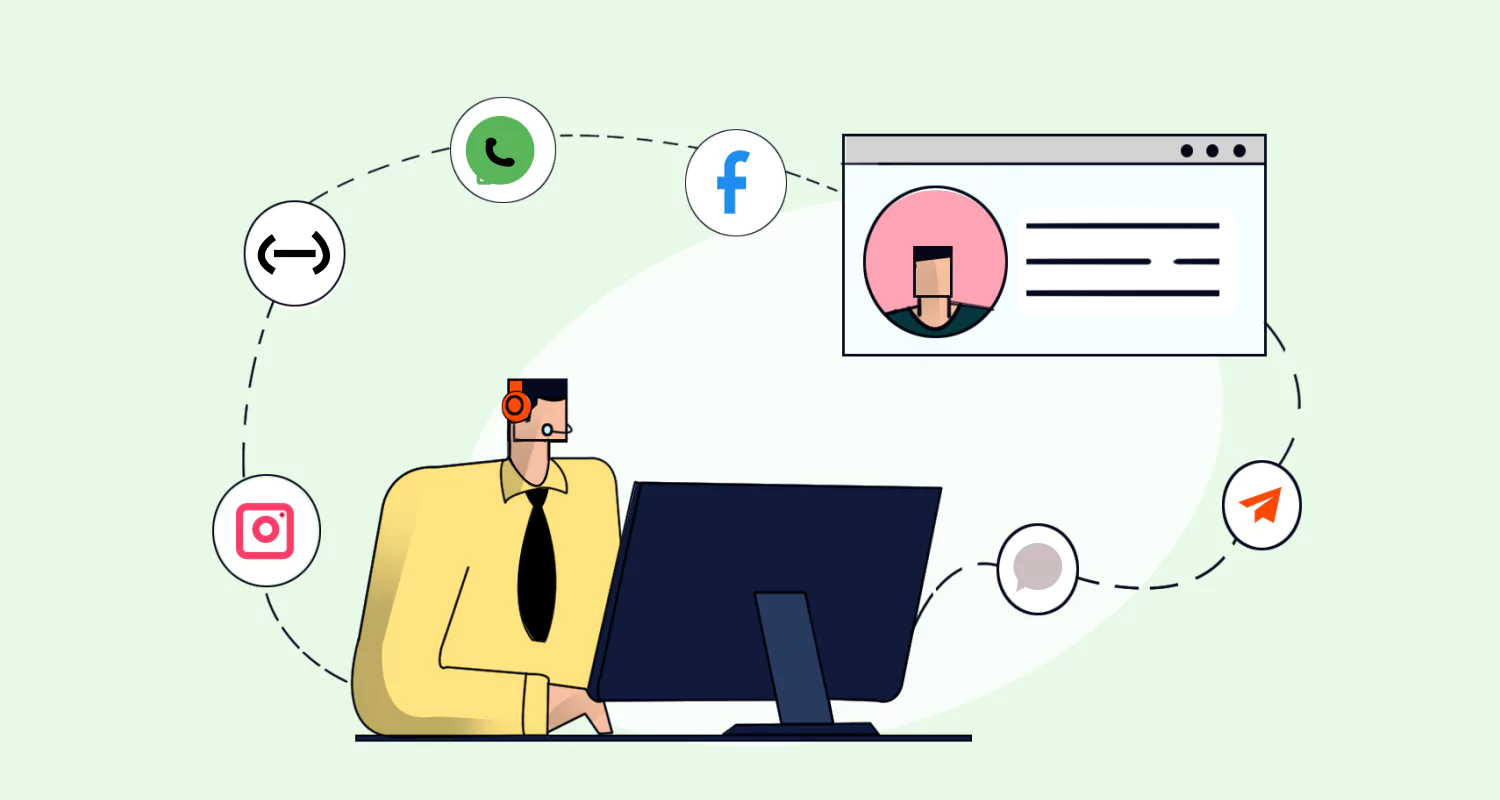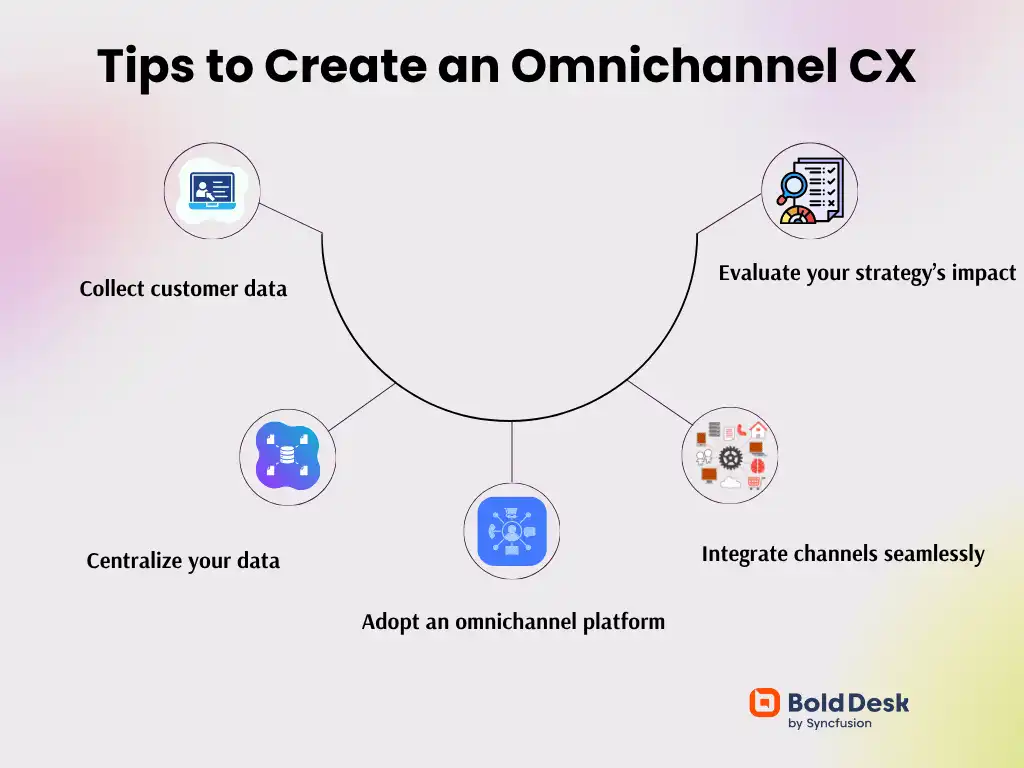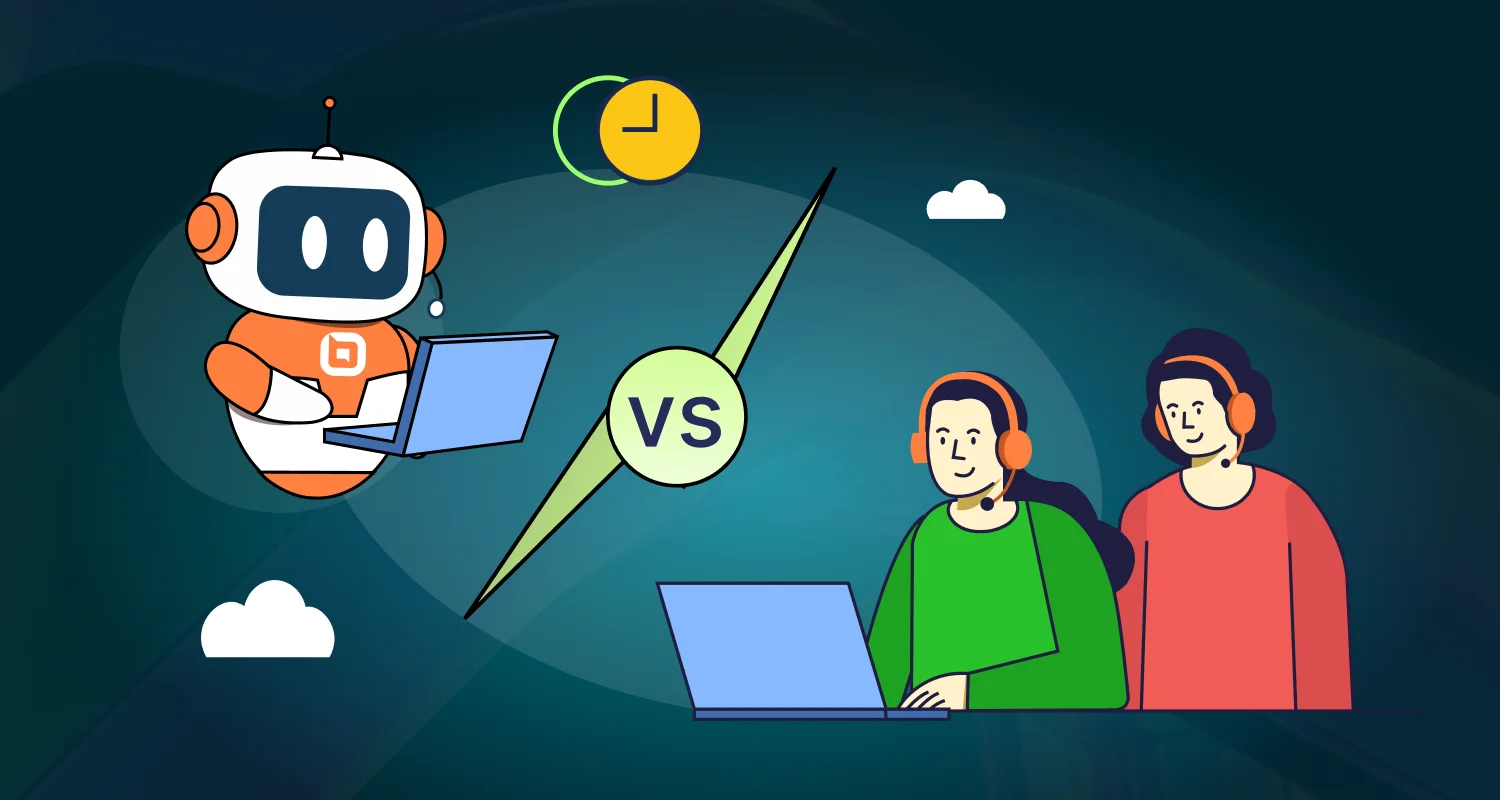In today’s fast-paced digital world, customers expect seamless interactions with businesses regardless of their chosen channel.
As customer inquiries pour in through email, live chat, social media, and other channels, support agents can quickly become overwhelmed by managing multiple platforms simultaneously.
An effective omnichannel customer experience prioritizes customer centricity by unifying all touchpoints into a seamless journey, ensuring every interaction is tailored to individual customer needs and preferences.
It ensures customers receive timely, personalized support across every channel, without having to repeat themselves or start over at each interaction.
In this blog, we’ll explore the omnichannel customer experience, how it differs from multichannel approaches, its importance, and practical strategies for implementing it effectively.
What is omnichannel customer experience?
Omnichannel customer experience is a unified approach in customer service that integrates multiple touchpoints into a single platform to ensure seamless transitions between channels, with consistent, uninterrupted support.
Customers can begin a conversation on one channel, such as email, chat, phone, or social media, and continue on another, while still receiving personalized service, leading to a more cohesive customer journey.
Unlike traditional multichannel setups, where each communication channel operates separately, omnichannel CX connects all customer touchpoints into one platform.
This approach not only enhances convenience for the customer but also builds trust and strengthens brand loyalty by delivering a personalized and coherent experience at every stage.
Multichannel vs. omnichannel customer experience
While often used interchangeably, multichannel and omnichannel customer experiences differ. Understanding their distinct features and functionalities is key to choosing the right approach for your business.
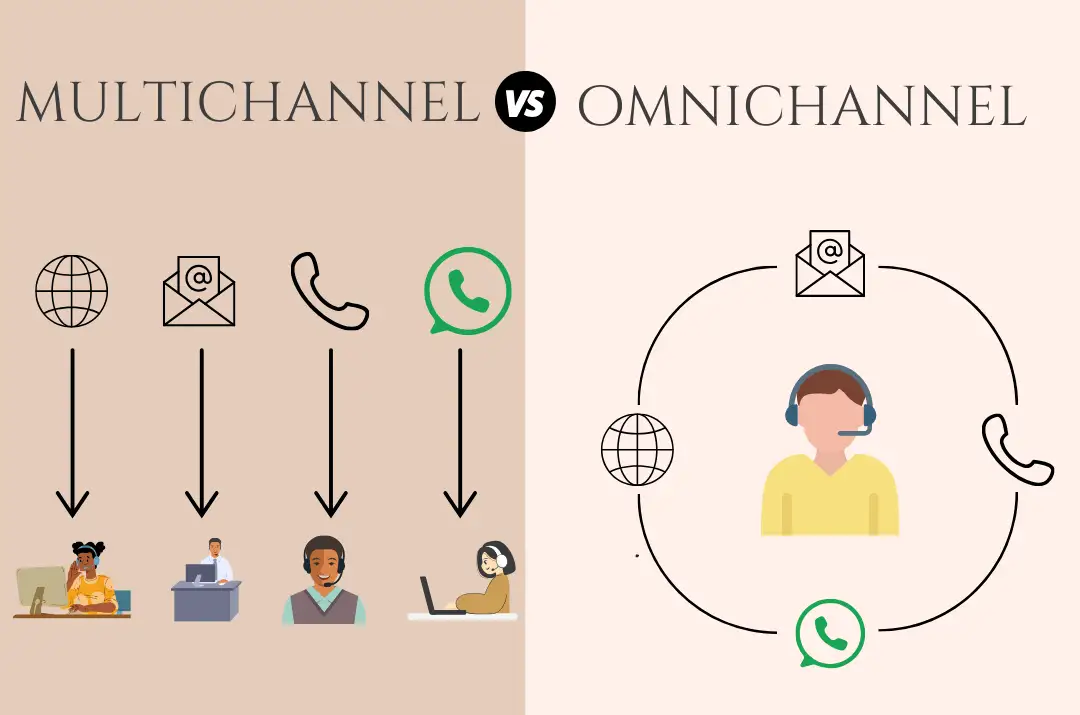
Multichannel customer experience is when a customer has access to multiple communication channels to reach out to your brand. Each channel is independent and is managed separately from the others.
A support agent will be forced to constantly switch between the channels to ensure customer requests are promptly responded to.
Since the communication platforms are not interconnected, the support responses will be slower, which can easily lead to unhappy customers.
Omnichannel customer experience, on the other hand, allows customers to contact agents using their preferred communication channel, in a connected manner, delivering seamless and consistent interactions throughout the customer journey.
With a unified customer experience strategy, both agents and customers can switch from one channel to another without losing context.
This means all the conversation history will be stored and moved from the preferred communication channel to the omnichannel inbox.
This leads to positive customer service experiences through fast responses and a reduced average handling time.
| Aspect | Multichannel CX strategy | Omnichannel CX strategy |
| Purpose | To provide multiple communication channels that operate independently | To deliver personalized, fast, and seamless experiences across all channels |
| Customer journey | Each channel functions separately, leading to disjointed communications | Every interaction is consistent, maintaining context across all channels |
| Customer data | Information remains siloed within each channel | Customer data is unified and accessible from any touchpoint |
| Personalization | Limited by channel-specific insights | Leverages comprehensive data for adaptive, real-time personalization |
| Resolution time | Often slower due to disconnected information | Faster issue resolution through seamless data sharing |
| Customer view | Fragmented, with multiple profiles across different channels | Single, unified profile regardless of engagement channel |
What are the benefits of an omnichannel customer experience?
Implementing omnichannel for customer service is a smart business move that drives performance across every stage of the customer journey.
Here’s why it’s important for your business:
- Increases customer satisfaction and loyalty: Many businesses lose customers due to bad customer service caused by disconnected support. By connecting every support channel, customers can switch between platforms without losing context. This ensures customers’ needs are consistently met across all channels, encouraging repeat business.
- Boosts conversion rates: A connected experience allows customers to continue conversations seamlessly across channels, make decisions faster, and avoid frustration, resulting in fewer drop-offs and higher conversions.
- Reduces operational costs: By centralizing customer data and automating workflows, support teams spend less time switching channels or asking repetitive questions. This leads to shorter resolution times, fewer escalations, and lower support overhead.
- Generates actionable insights: With customer experience analytics and all interactions centralized in one place, businesses gain a 360-degree customer view of behavior, preferences, and pain points. These insights help personalize future interactions, identify gaps in service, and optimize omnichannel marketing strategy.
- Enhance engagement across channels: An omnichannel support experience meets customers where they are, whether it’s mobile, desktop, or social media. This flexibility encourages ongoing interaction and keeps your brand top-of-mind throughout the customer lifecycle.
How to create an effective omnichannel experience strategy
Creating a seamless omnichannel experience isn’t just about being present on multiple platforms, it’s about delivering connected, consistent, and personalized support across every customer touchpoint.
Here’s a step-by-step guide to help you build an omnichannel customer experience strategy that works:
1. Collect customer data
Start by gathering data from every interaction point to understand your customers deeply, which is essential for delivering personalized, seamless omnichannel interactions.
To do it right,
- Capture behavioral data, product usage insights, and feedback from CSAT surveys and reviews.
- Use customer journey mapping tools to identify friction points across channels.
- Create customer personas based on patterns and preferences to guide personalization.
- Align data collection across marketing, sales, and support teams for a complete and accurate customer view.
2. Centralize your data
The heart of omnichannel experience effectiveness is connected data that flows seamlessly between systems.
Once collected, unify customer data into a single source to ensure that every team and channel has access to the same accurate, up-to-date information, improving agent productivity.
You can:
- Implement a CRM or customer data platform (CDP) to sync data across channels.
- Integrate systems that support real-time data syncing and sharing.
- Maintain data quality by removing duplicates and validating entries.
3. Adopt an omnichannel customer experience solution
Choose the best customer service software that brings all communication channels into one interface, enabling agents to deliver faster, more informed support.
Additionally, incorporate self-service options such as knowledge base software to empower customers to resolve common issues independently, reducing wait times and improving overall satisfaction.
For example, ideal support tools offer:
- A unified agent workspace for managing conversations across email, chat, phone, and social media.
- Automation and AI tools to streamline workflows and maintain context.
- Reporting and analytics to monitor performance and give insights.
- Flexible integrations with existing business tools.
For instance, BoldDesk can let you connect every customer touchpoint for faster, smarter omnichannel customer service.

4. Integrate channels seamlessly
Your channels should work together to create a unified experience, so customers never feel like they’re starting over when switching platforms.
For you to achieve this, you need to:
- Centralize interaction history so agents have full visibility across channels.
- Implement a unified agent workspace to manage omnichannel conversations.
- Automate transitions between channels to preserve context.
- Sync systems in real time to avoid delays or fragmented communication.
5. Evaluate the impact of your omnichannel strategy
Customer analytics provide valuable insights into user preferences, enabling brands to refine their omnichannel engagement strategies, align with customer expectations, and deliver consistent value.
To gauge the real impact of your omnichannel customer experience, you need to:
- Monitor customer experience metrics like CSAT, NPS, and conversion rates to assess overall experience.
- Analyze channel switching patterns to identify friction in the customer journey.
- Collect feedback through customer sentiment analysis to gauge emotional tone and identify pain points.
Top omnichannel customer experience examples
Today’s customers expect consistent, personalized interactions across every channel they use, whether it’s online, in-store, or through mobile apps.
The following are examples of brands that have mastered a winning strategy with omnichannel experiences.
Virgin Atlantic
Virgin Atlantic is a British airline known for its customer-first service and premium travel experience.
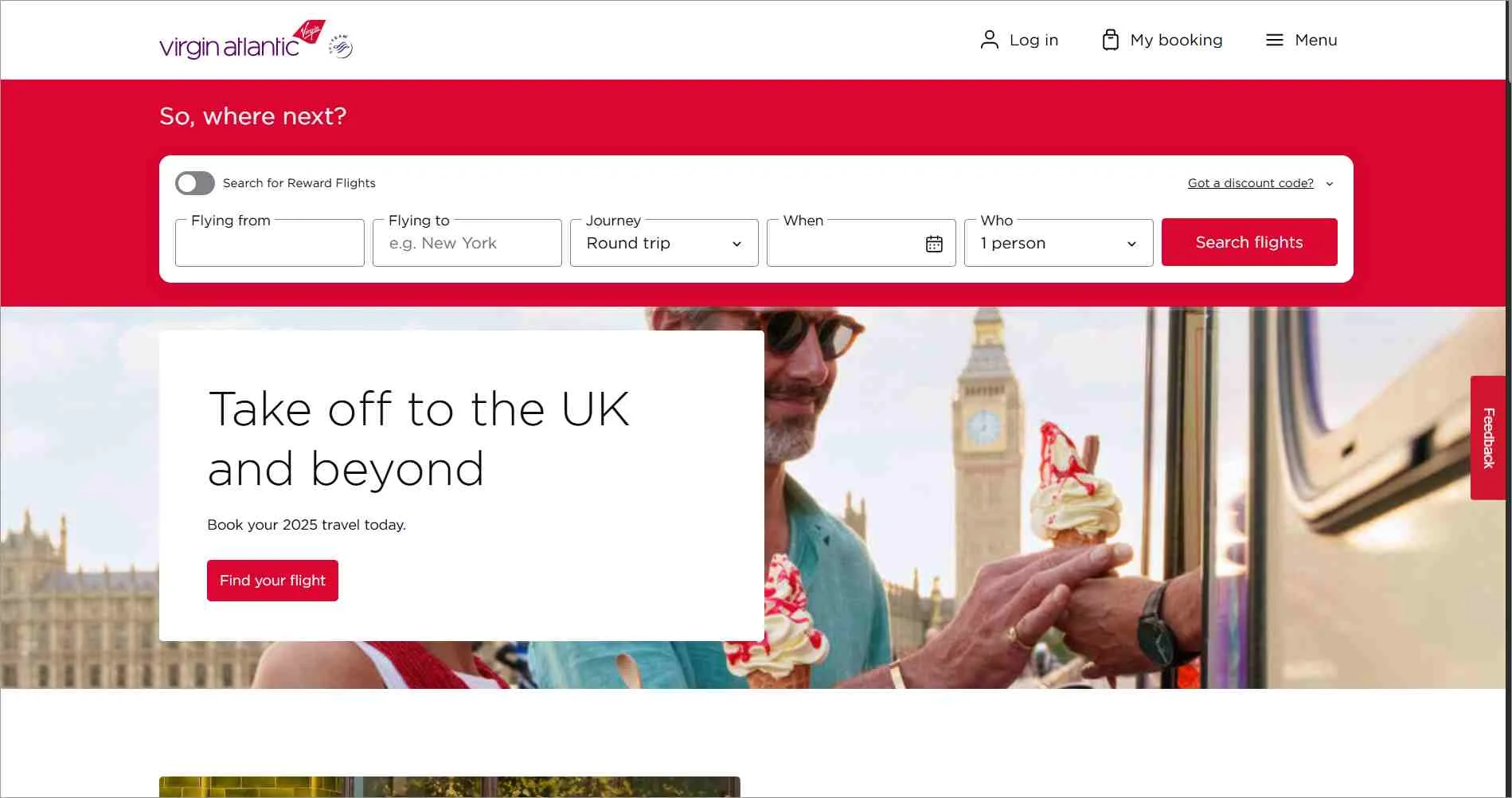
The airline unified multiple legacy CRM systems into one integrated platform, enabling real-time data sharing to enhance customer journeys.
From booking to boarding, travelers receive timely updates via email, app notifications, voice, and live chat, whether it’s a delay or gate change, ensuring passengers stay informed and supported across every channel.
Chase Bank
Chase Bank offers a unified customer experience by syncing digital and physical banking services in real time.
Whether depositing a check via mobile or withdrawing cash at an ATM, customer data updates instantly across all platforms.
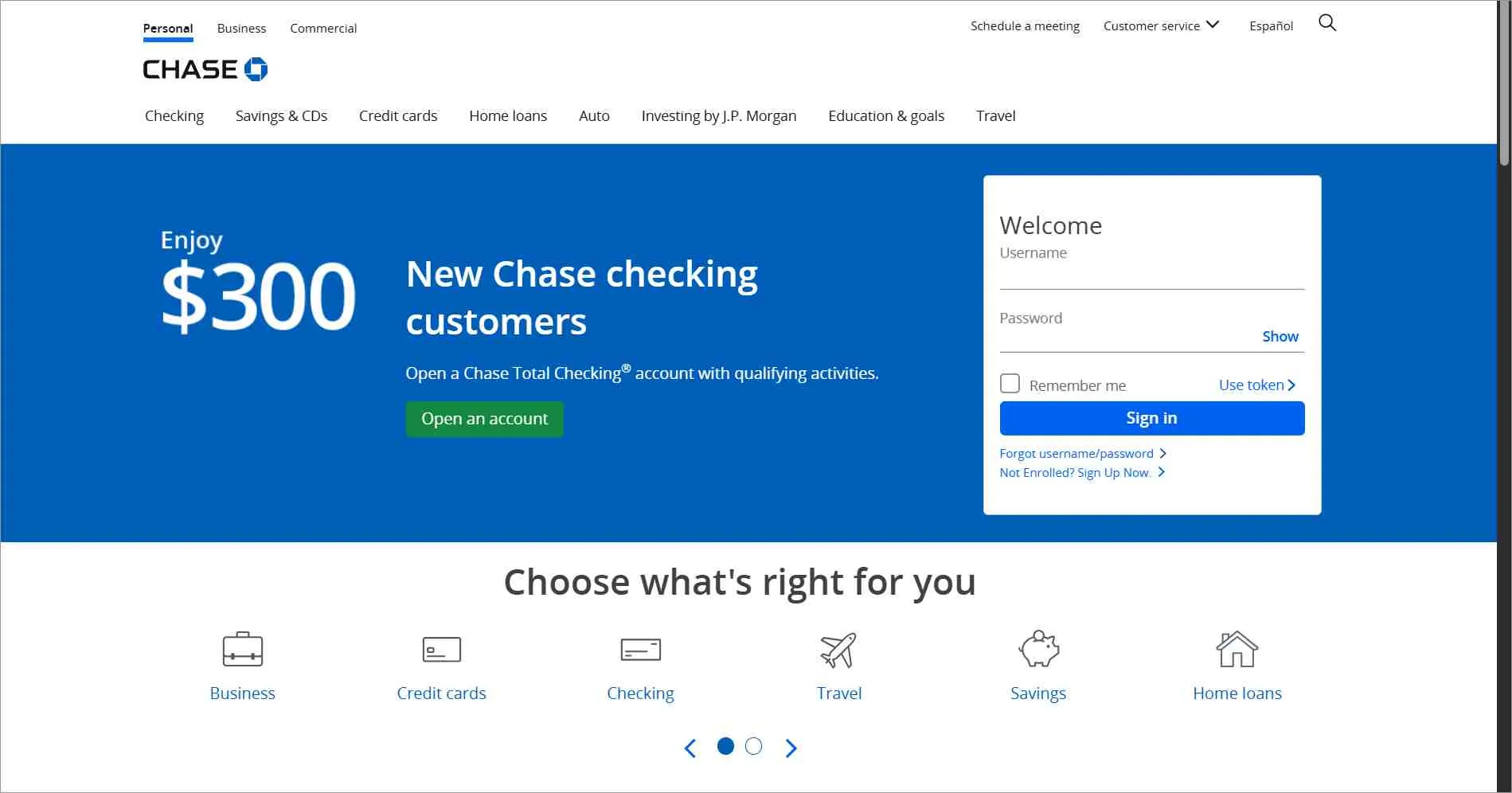
With real-time alerts, AI-powered financial tools, and personalized advice, Chase Bank keeps users informed and in control of their finances.
Sephora
Sephora delivers a connected shopping experience across its app, website, and stores. With one Beauty Insider account, customers earn and redeem rewards seamlessly, no matter where they shop.
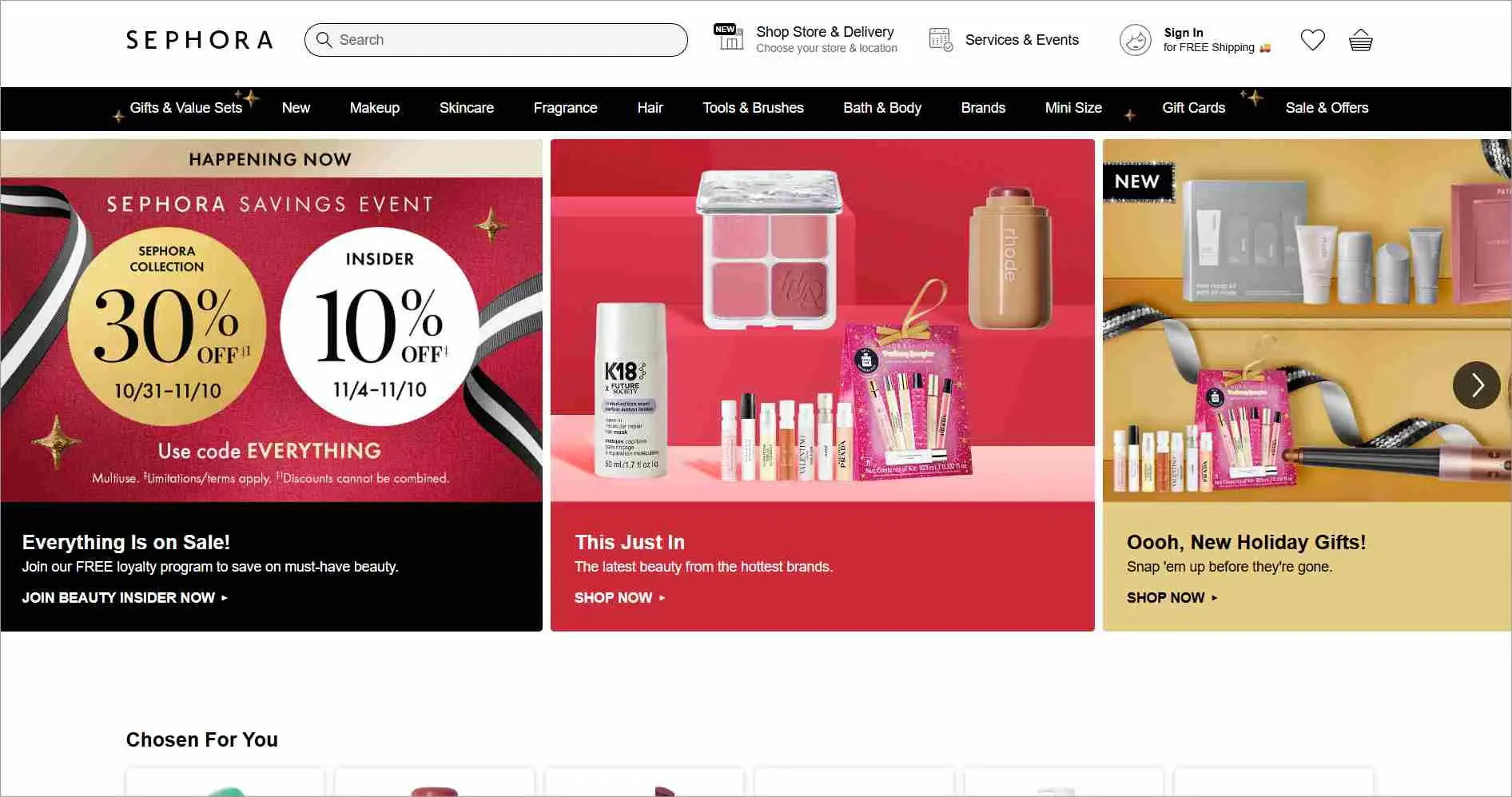
Shoppers can virtually try products in the app, then test or pick them up in-store. Their beauty profile syncs across all channels, enabling personalized recommendations whether online or in person.
Spotify
Spotify sets the standard for omnichannel engagement by offering a consistent, personalized experience across smartphones, desktops, and smart speakers. Users can start a playlist on one device and seamlessly continue on another.
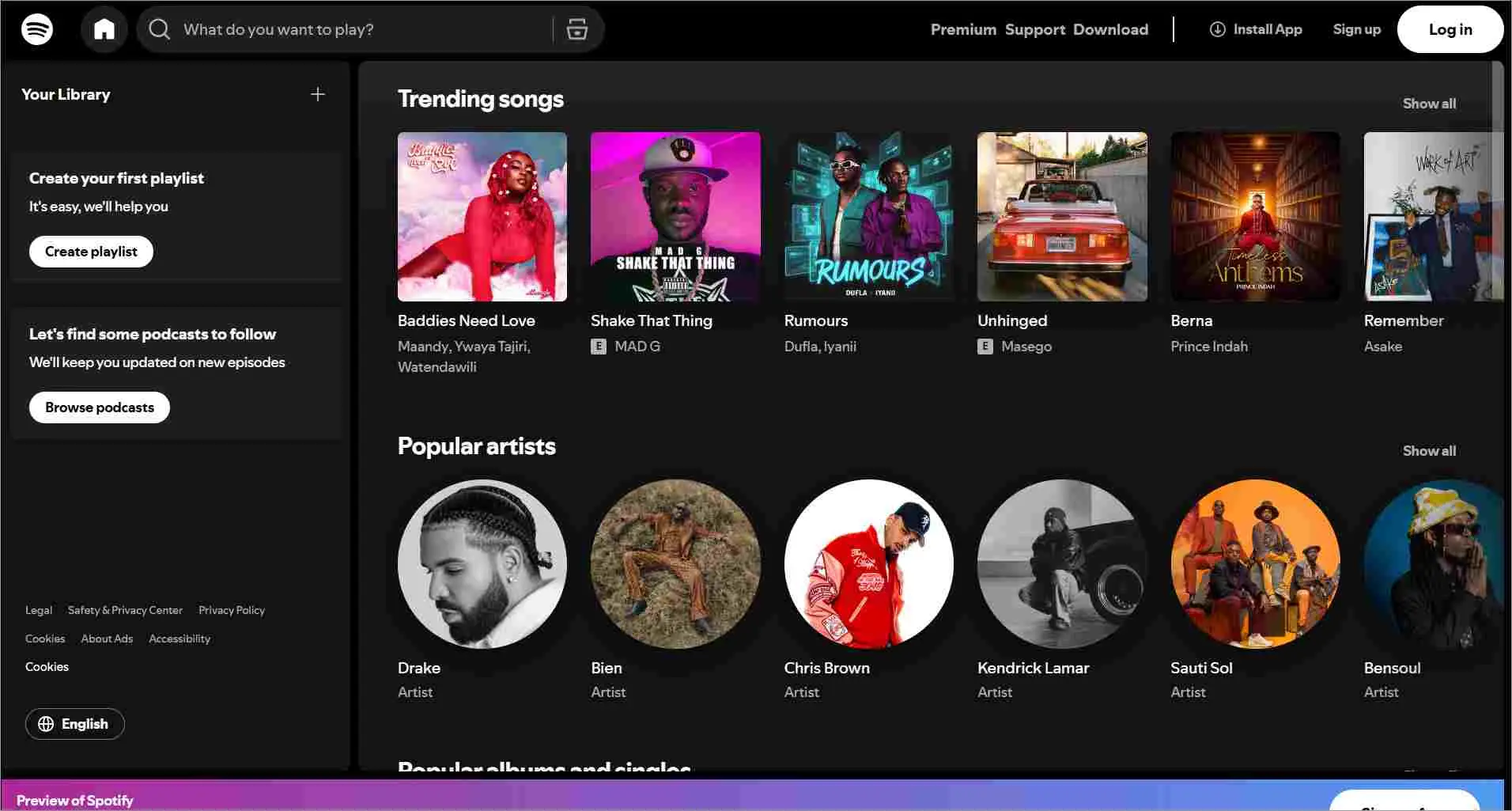
Its recommendation engine uses data and machine learning to curate playlists like Discover Weekly and Daily Mix, keeping users engaged across channels.
Kaizen Gaming
Kaizen Gaming, a leading GameTech company in Europe, delivers a connected gaming experience through its brands Stoiximan and Betano.
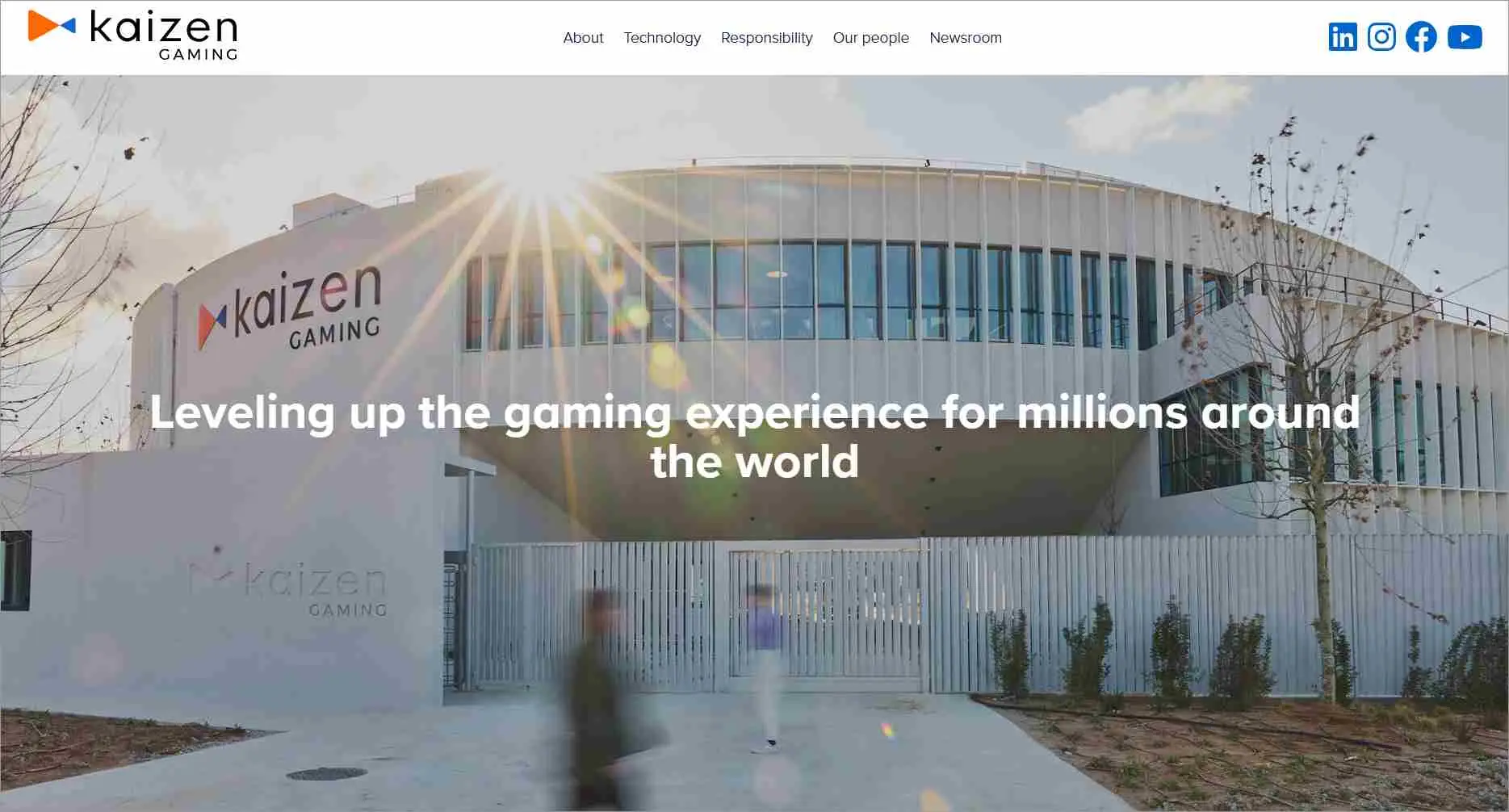
Players receive personalized offers, real-time updates, and support across mobile apps, websites, and chat platforms. By integrating AI and customer data, Kaizen tailors content and promotions to individual behaviors.
Starbucks
Starbucks gives its customers a seamless omnichannel experience by connecting its mobile app, website, and physical stores.
Customers can order ahead, pay, earn rewards, and receive personalized offers, all through the Starbucks app.

Their loyalty program syncs across channels, allowing users to start an order on their phone and pick it up in-store without interruption.
Amazon
Amazon’s omni channel customer engagement strategy centers on creating a frictionless shopping experience across devices and platforms.

Customers can browse on mobile, order via Alexa, and pick up items at Amazon Go stores, all while enjoying consistent service and personalized recommendations.
Peloton
Peloton enables a connected fitness journey across its app, smart equipment, website, and retail showrooms.
Users can stream live or on-demand workouts from any device, with their progress and preferences synced in real time.
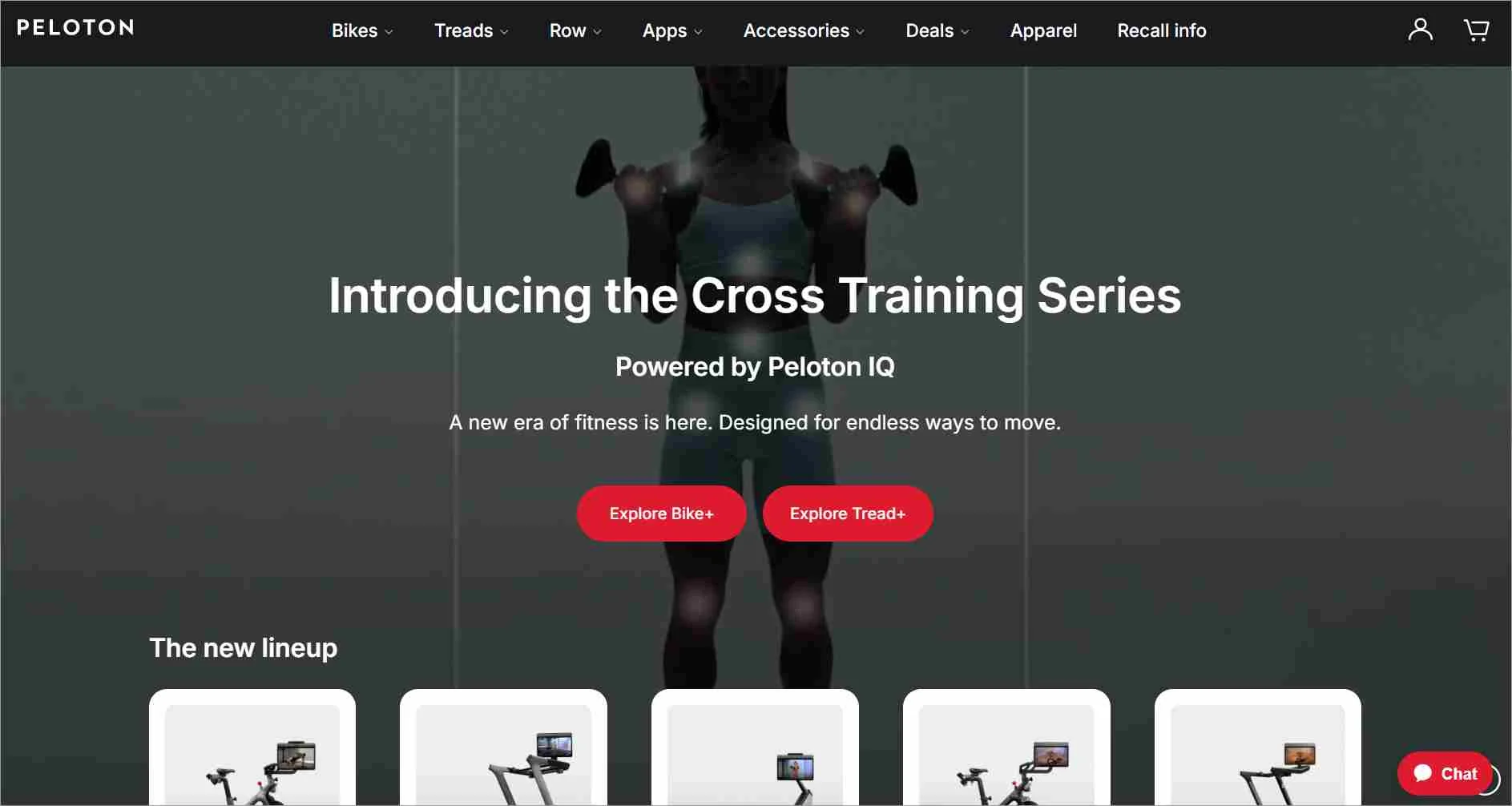
The experience is consistent whether at home, in a hotel, or on the go. Peloton’s seamless integration of content, community, and support keeps users motivated and engaged across every channel.
Sweetgreen
Sweetgreen blends sustainability, technology, and customer-centric design to create an omnichannel dining experience.
Customers can order through the app, website, or in-store kiosks, with their preferences and loyalty rewards syncing across all platforms.

Sweetgreen’s data-driven approach ensures every touchpoint, from mobile to restaurant, is optimized for speed, transparency, and satisfaction.
Life360
Life360 supports a connected experience that helps users locate lost items through its app, Bluetooth trackers, and smart home integrations.

Customers can track their belongings from their phone, tablet, or even voice assistants like Alexa and Google Assistant.
The app syncs across devices, allowing users to ring their Tile, view location history, or receive alerts when they leave something behind.
Transform support with an omnichannel customer experience strategy
Today’s customers expect more than just quick responses; they want a connected, personalized experience across every channel. Meeting these expectations isn’t just good customer service; it’s a competitive advantage.
An effective omnichannel strategy delivers consistency, trust, and seamless interactions, ensuring customers feel valued at every touchpoint.
BoldDesk makes this possible by centralizing communication, boosting agent productivity, and empowering businesses to provide exceptional support without complexity or high costs.
Ready to take your customer experience to the next level? Contact our support team to start your omnichannel journey today and discover how easy it is to transform support.
We’d love to hear from you! Share your thoughts, feedback, or ideas in the comments below. Your insights help us create even better experiences.
Related articles
- Multichannel vs Omnichannel Customer Support: Understanding the Key Differences
- Omnichannel Customer Engagement: Unifying Your Support Channels
- Next-Level Support in BoldDesk: Live Chat and Omnichannel
Frequently Asked Questions
Help desk or customer service software with built-in omnichannel support is ideal for delivering a seamless omnichannel customer experience.
A great example is BoldDesk, which offers powerful features like an omnichannel inbox, a unified ticketing system, AI-powered CX automation, and live chat.
An omnichannel customer experience strategy elevates customer satisfaction by delivering swift, seamless responses and highly personalized support.
It empowers customers with the freedom to engage effortlessly across their preferred channels, creating a consistent and cohesive journey that fosters customer happiness and satisfaction.
Key metrics for tracking omnichannel CX success include customer satisfaction score (CSAT), net promoter score (NPS), and customer effort score (CES).
You can also monitor first contact resolution, average response time, channel engagement, and agent productivity to ensure seamless service and consistent experiences.
Businesses can strike this balance by automating routine tasks like order tracking or FAQs while reserving human support for complex, emotionally sensitive, or high-stakes issues.
Continuously adapting based on customer feedback and behavior ensures that automation enhances, rather than replaces, the human touch.
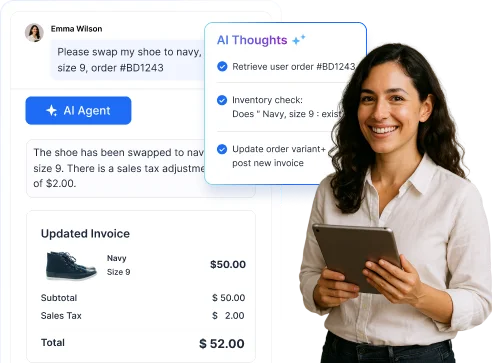


















 Email Ticketing System
Email Ticketing System Shared Inbox Software
Shared Inbox Software Multi Brand Help Desk
Multi Brand Help Desk Internal Help Desk Software
Internal Help Desk Software Trouble Ticketing Software
Trouble Ticketing Software Mobile Help Desk
Mobile Help Desk 









